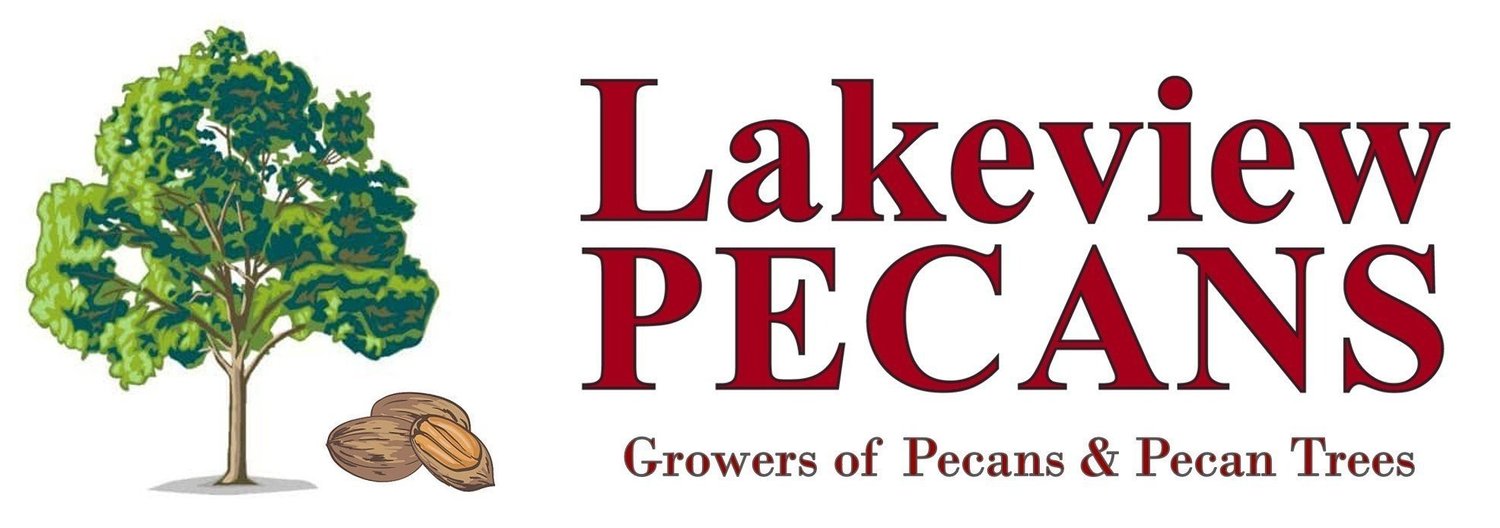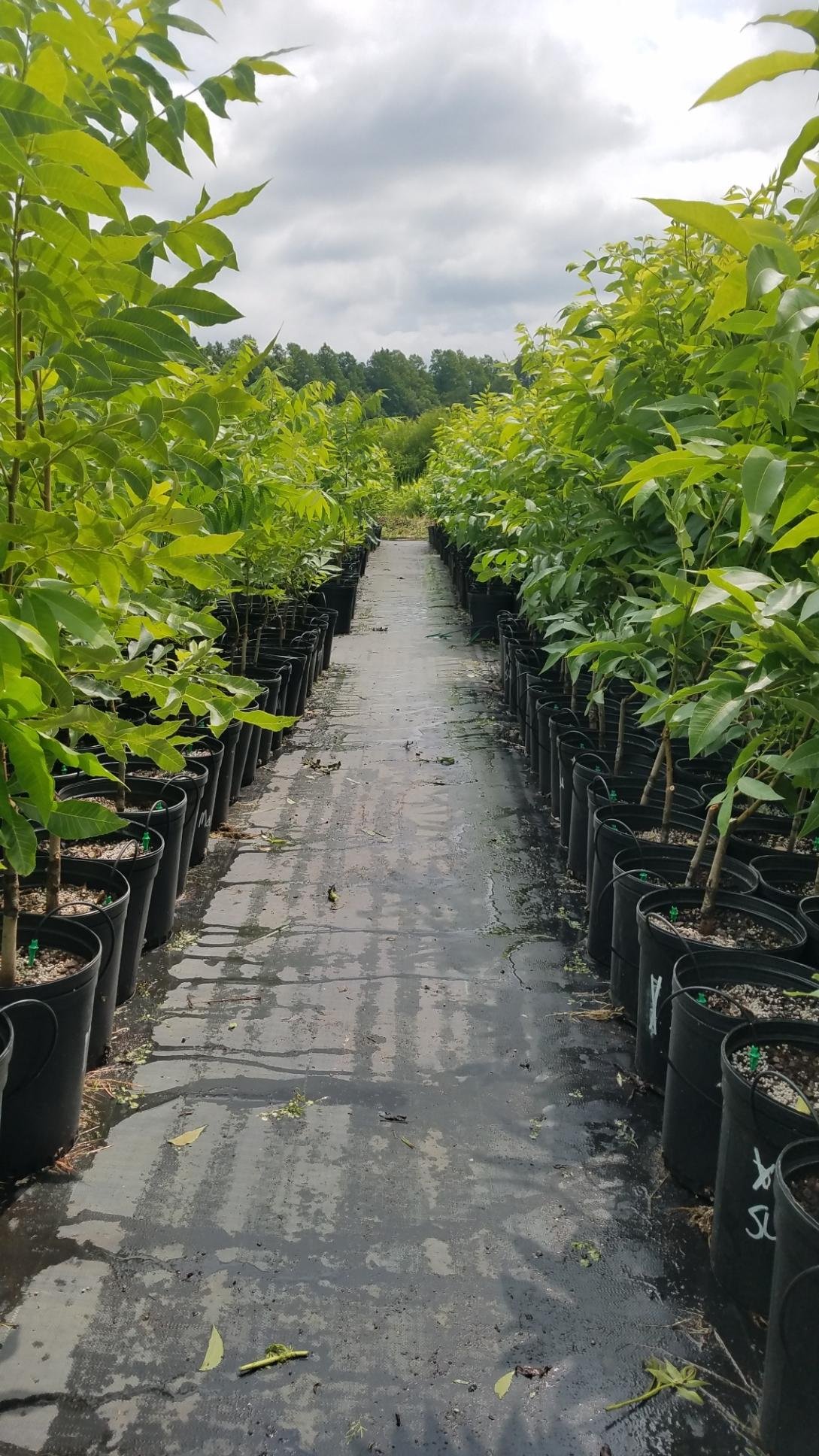Container Grown Trees
At Lakeview pecans, container grown pecan trees result from grafting, known grafting materials, onto growing rootstock after two years growing in containers.
To insure variety integrity, mature orchards at Lakeview provide almost all grafting material used for propagation.
Established two-year old rootstock helps to insure a strong root system and liveability.
Ample water supply provides for irrigation as needed.
Daily monitoring of root-zone moisture prevents excessive watering.
Irrigation system provides for foliar application of fertilizer or pesticides.
Grafted trees are typically grown in 5-gallon containers.
Trees reaching a minimum of three feet in height are most ideal for transplanting.
Nurserymen’s objective is to develop a strong root system and to insure the graft union is well healed.
Transplanting at about three feet tall limits effect of bringing rootbound in containers.
Transplant hole should be twice the width of rootball.
If hard compacted soils, hole should about six inches deeper than rootball. About one-third potting soil should be mixed with native soils as hole is being filled.
Tree should be planted same depth as soil in container. It is very important that a tree is not plated too deep or too shallow!
Depending on size of tree, some may have developed a circular tap root growth pattern.
If that has occurred, the circular growth should be cut away.
Several secondary and smaller tap roots will develop to provide sufficient anchoring of the mature tree.
When possible, the tap root should be straightened and worked in the bottom of the hole, enlarge the hole if necessary.
Generally, trees are very easily removed from pots.
Place trees in center of hole to accommodate root spreading.
Loosen soil and spread lateral roots as hole is being filled.
When hole is about two-thirds filled, apply about two gallons of water to firm soil to remove air pockets.
Continue filling the hole and firmly tamp, avoiding breaking of feeder roots.
Generally, fertilizers nor lime should be applied in planting hole. When soil analysis clearly show that soils are significantly under nourished, small amounts of lime and fertilizer in the planing hole may be needed.
Leave slight depression around tree to facilitate watering.
Place collar around tree for herbicide protection. Collar should remain for 3-4 years.
A vegetation-free zone should be maintained around the tree.
If mulch is applied, limit to no more than three inches of decayed matter, pine straw, etc.
Ideally, two-thirds of tree height should be in canopy.
Trees need to be supported for the first several years to support the expected rapid growth. Half-inch conduit will be sufficient.
Vertical growth should be limited to 12-18 inches annually.
Removal of excessive growth will divert energy to caliper development.
On healthy growth, the topmost bud will quickly break and become the new central leader.
Picture at left shows desired rate of growth in 5 gallon and 7 gallon container grown trees.
These are the ideal size container grown trees for transplanting.
Larger sizes will suffer from root-bound.










